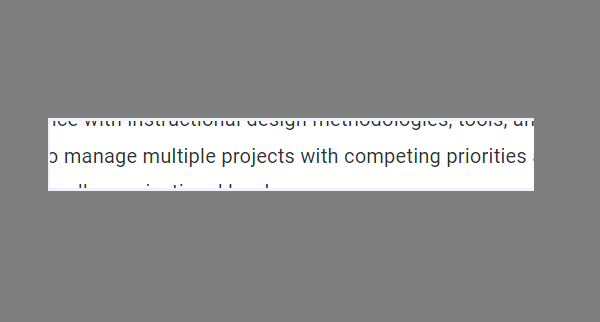My Medium Content
Thanks for stopping by! The content here is going to be in a little flux for a while because I’m moving items and shifting some of my media creation over to Medium as a way to leverage the power of the publishing platform. I’ll still post a unique blog here and on LinkedIn from time to time, but my main focus will be on that site.
Get in touch!
pmann@educationalthinking.com
(717) 400-6266 (voicemail)
Harrisburg, PA

CP2077: THE COST OF POORLY MANAGING EXPECTATIONS
Cyberpunk 2077 (CP2077) by CD Projekt Red Studio in Poland (CDPR, Stock: OTGLF) may be the most successful project failure in software development in history. On the one hand, it is unambiguously successful. The record sales figures for the first ten days following the December 10, 2020 release exceed 13 million copies (≈$780M) even after the raft of highly publicized, no-questions-asked refunds due to bugs and playability issues. On the other hand, the project is a failure for investors because its record sales fell short of analyst expectations of 16.4 million copies (≈$984M). For consumers, it failed because of eight months of delays followed by a delivery that lacked anticipated features. It did not perform as expected – being virtually unplayable on some legacy consoles – resulting in responses such as Sony removing the title from its PlayStation online store for all of its platforms.

MANAGING PROJECTS AND MANAGING CHANGE: THE SOLUTION TO PM VS. OCM
Putting arguments, assertions, and turf defense to the side, PM and OCM are only distinct when neither considers the whole purpose and process of the change. To truly succeed, every project must include the technical and functional requirements, and facilitate the accomplishment of both. When done properly, correctly verified technical requirements and correctly validated functional requirements results in a successful and successfully adopted project.

PROJECT ESTIMATES AND UNDERSTANDING SUCCESS
Organizations that want meaningful long term project success need to reinforce the basics of estimates. We need to finish the conceptual equation by connecting the methods of calculating our expected costs to the way we use those figures to baseline projects and define success or failure. Finally, we need to eliminate the inconsistent views of estimates that create varied perceptions of “success” and “failure” so that everyone involved has the same understanding of what it means to be “on target.”

Do Your Priorities Compete?
Priorities that appear to conflict do not need to be managed, they need to be prioritized. In an earlier article, I wrote about ways to deconflict priorities, and that recommendation stands. When organizational priorities appear to be at odds, it means most simply that it is not clear which priority is more important than any other. This is a clarity problem, not a conflict.

Three Rules for Managing Conflicting Priorities
However, the more I thought about it and the more I considered cleaver analogies, the more I became aware that the trope – and it is surely so overused as to be a trope by now – about working in a position with multiple conflicting priorities is really an indicator deep, underlying problems in an organization’s alignment with its objectives.

How S.M.A.R.T. Are You?
Organizations strive to have something reportable – usually something “green” that looks both important and constantly successful – without any chance of failure or actually changing (i.e. improving).

Planning to Action in 5 Easy Steps
Why then, do leaders vault over analysis and duck planning, and jump right into implementation when things really have to go right? The only thing I can think of is that there is a belief that analysis and planning have to be overly complex to work, but that's just not true.

Is A-76 Dead, or Just Sleeping?
I am driven to wonder whether the rule itself is finished, or if it simply needs better and more regular implementation. My sense is that, of the two sides, only the "kill it" side has a clear focus, but that doesn't mean it is the only relevant view even if there isn't an obvious and reasonable focus on keeping it.
